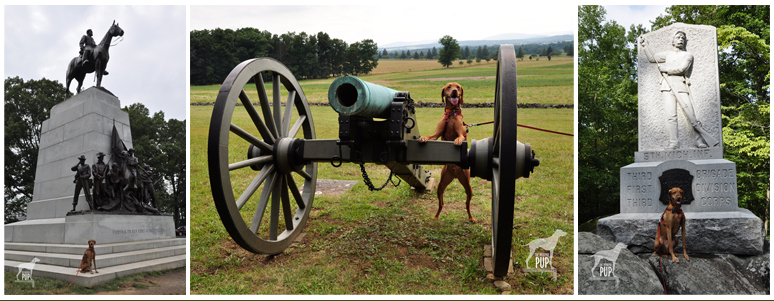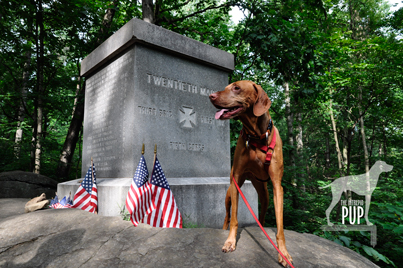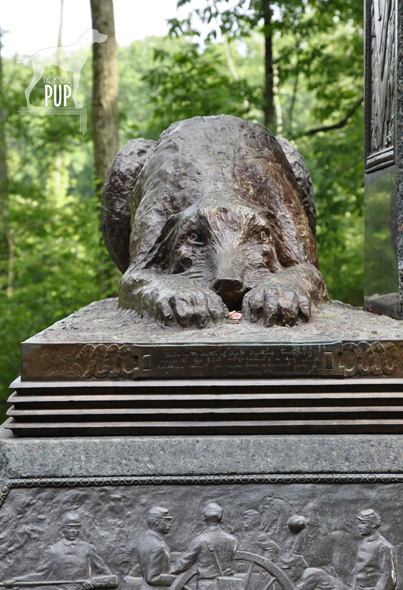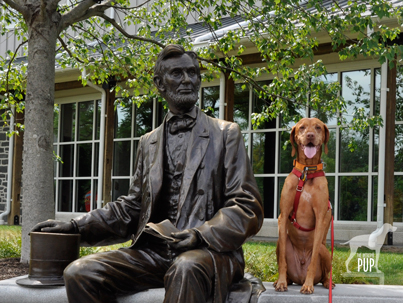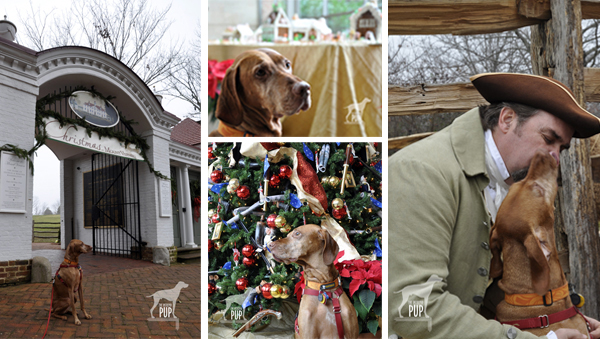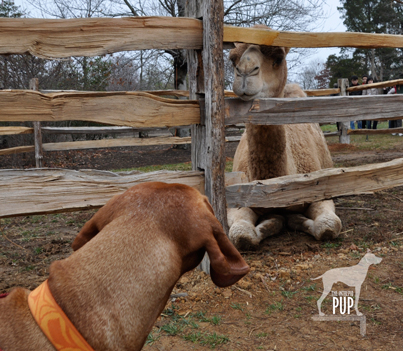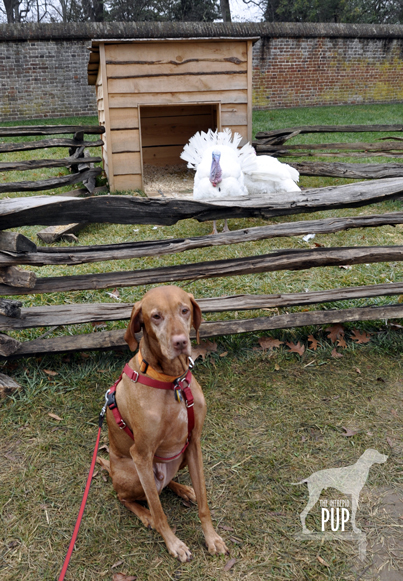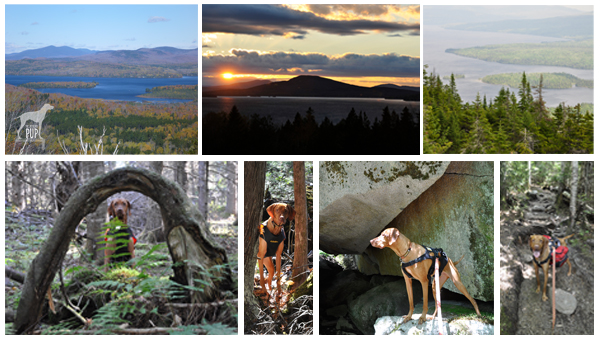
Glimpses from around the 18-acre campus of the Chesapeake Bay Maritime Museum in St. Michaels, Maryland. Clockwise from left: a) Goofing around with the cut-outs in front of the museum; b) In the boat building workshop; c) Surveying the shoreline with the Hooper Strait screwpile lighthouse in the background; d) A tasty view of the harbor from atop the 1879 lighthouse; e) Catching some rays on the pilothouse of the buy boat Thor; f) Exploring the history of Maryland’s crab fishing industry.
It was a beautiful spring day, and we decided to head to Maryland’s eastern shore to do some exploring in St. Michaels, a town known for its Chesapeake Bay breezes, traditional Maryland fare (think: blue crab and Smith Island cake, which are the official state crustacean and state dessert, respectively), and history (more about that later). To reach St. Michaels, you head for Annapolis which is a pretty snazzy dog-friendly stop in its own right, go over the Bay Bridge, and about 50 miles later (less than an hour, if the traffic gods are smiling upon you) wind up at your destination.
We didn’t set out with a real plan this time other than to savor the sights, the day, and okay…maybe some crab cakes. We followed Route 33/Talbot Street about a half mile into St. Michaels’ downtown and turned right to park in the Chesapeake Bay Maritime Museum’s lot.
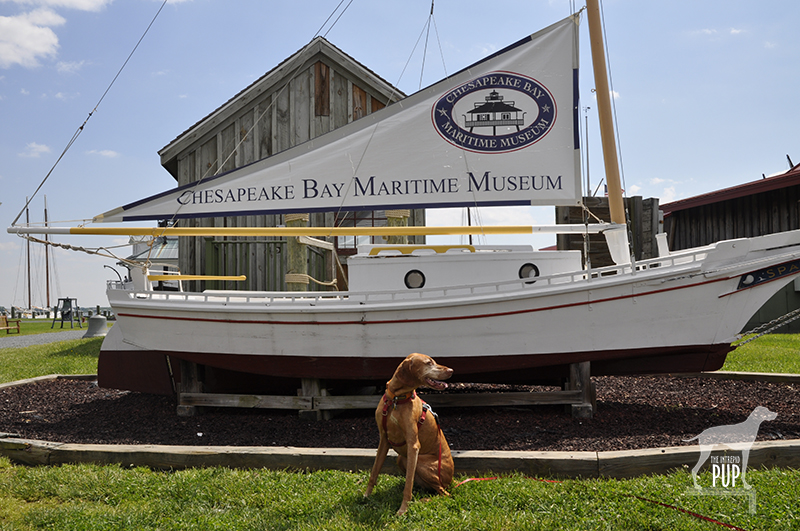
What!? Chesapeake Bay Maritime Museum is dog-friendly. How cool is THAT?!
We of Team Tavish were trying to figure out where along the fence line was the best spot to photograph Intrepid Pup Tavish with the museum’s signature lighthouse in the background, when…. whaaaaat?? Wait. A. Minute. Just on the other side of the fence we spied a Mutt Mitt Dispenser! You wouldn’t have one of those planted there if dogs weren’t welcome, right? So we stopped into the museum’s Admissions Building and inquired. “Yes, of course!” the visitor services attendant replied. “You’ll need to keep your dog on a leash and clean up after him, but otherwise he’s allowed anywhere on the campus, except in buildings that have carpeting.” With that, we happily shelled out our entry fees (Tavish was free) and ended up spending nearly three hours there!
The museum was a real treat: unexpectedly dog-friendly and far more extensive than we’d imagined. There were only four carpeted pavilions Tavish couldn’t go into. For those, we just took turns while one of us waited outside with Tavish, who did his share of rolling in the grass and watching the passing boats. Tavish even spied a beautiful tabby keeping an eye on us from a scrub pine. We later learned she’s a former stray who is now the museum’s resident salty boatyard cat, Ms. Edna Sprit! As for places Tavish COULD venture into, there were many! We wended our way through the Small Boat Shed housing the nation’s largest collection of Chesapeake Bay watercraft. We explored a dredgeboat to learn all about oystering and clambered out on the wharf to the working waterman’s shanty, where we got to check the eel pots and clumsily experiment with using oyster tongs. And a real highlight was navigating a narrow spiral staircase and crawling through a hatch to reach the top of the 1879 Hooper Strait Lighthouse!
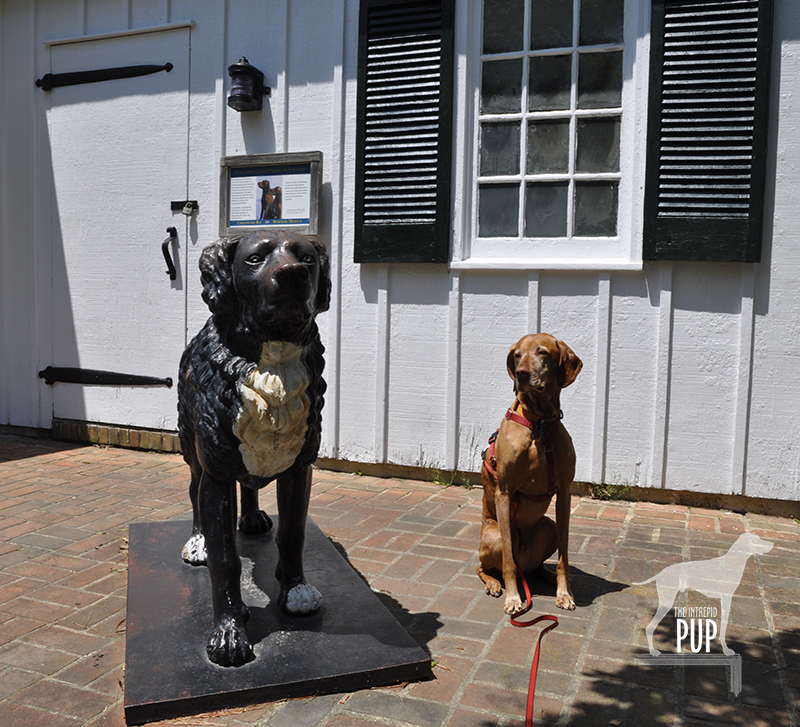
An homage to Maryland’s state dog: Tavish sizes up this cast iron statue of a Chesapeake Bay Retriever outside the “Waterfowling” pavilion.
A bonus for dog lovers is the museum’s waterfowling exhibit chronicling a key element of bay heritage. While Tavish couldn’t partake of the fascinating display of hand carved duck decoys and tools of the trade, there was a stolid cast iron Chesapeake Bay Retriever statue outside with an interesting story (see photo at right). It just so happens that in 1807, Marylander George Law was sailing home from England aboard the Canton, when he intercepted a sinking British vessel and rescued its crew and two Newfoundland puppies. When Law arrived safely at port, he purchased the puppies from the captain and brought them home. He named the male Sailor and the female Canton. Since Law ultimately had to go back out to sea, he gave the dogs to two men who allowed them to breed with local dogs, probably coonhounds. Their progeny had dense dual coats, took exceptionally well to the water, and were prolific in their versatility and ability to retrieve waterfowl. The Chesapeake Bay Retriever as a breed was born, and in 1964, it was recognized as Maryland’s official state dog.
 Dogging the Details
Dogging the Details
38°47’14.35″N, 76°13’13.73″W
Chesapeake Bay Maritime Museum, St. Michaels, Maryland
St. Michaels ranks a “2” on the Intrepid Pup’s wag-a-meter for being exceptionally dog-friendly and offering plenty to do for pup and person alike.
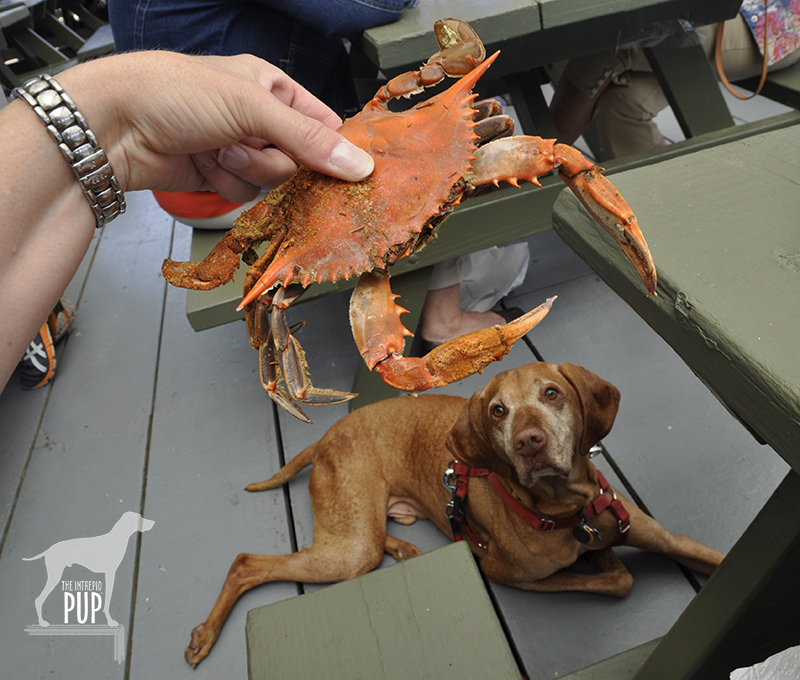
Hmmm. . . lobster I’m familiar with from living in Maine. You? Not so much!
If you’re spending the day in St. Michaels, you’ll need to grab a bite to eat, and fortunately there’s a quintessential Maryland-y option that’s also dog-friendly: The Crab Claw Restaurant. This is definitely fair-weather casual dining, because with your pup in tow, you’ll be eating outside on the partially covered, spacious deck. Be prepared to wait a bit for your picnic table, since lots of people will have this very same idea on sunny weekends. It’s worth it, however, for the good food and spectacular view of the bay. Truth be told, the people-watching is equally entertaining, as folks pull up in boats of all shapes and sizes. After noticing a young couple a few tables away too full to finish off their dozen crabs, we decided to order the less messy and labor intensive option: crab cakes. Tavish was acting particularly winsome that afternoon, and it wasn’t long before the woman from the couple came over to pet and take pictures of Tavish. And. . . somehow we ended up with the remainder of their steamed crabs! Tavish is a shameless charmer and seemed both intrigued and pretty smug about this turn of events (see photo at left). Unbelievable.
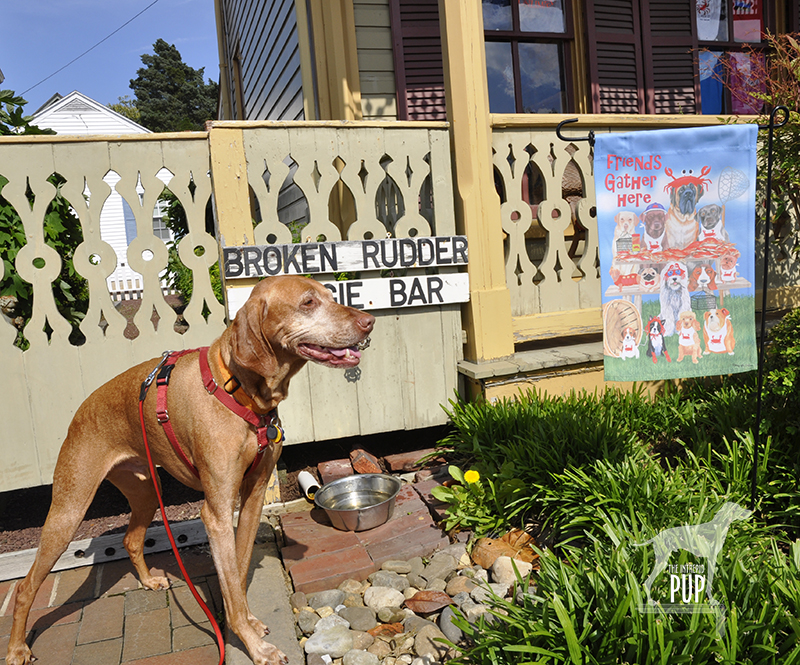
Talbot Street in St. Michaels caters to dogs with this complimentary, walk-up watering hole: the Broken Rudder Doggie Bar.
You’ll want to walk off your lunch, and St. Michaels’ Talbot Street/Route 33 is lined with plenty of shops, including a pet boutique named Flying Fred’s. If you pause to read historical plaques along the way—or fancy ducking into the St. Michaels Museum at St. Mary’s Square—you’ll learn that St. Michaels was where young Frederick Douglass lived as a slave from 1833-36. You’re also bound to hear how the resourceful residents of St. Michaels “fooled the British” during the War of 1812. With the British fleet approaching in August 1813, townsfolk hung lanterns high in the trees at the outer boundary. The British fell for the ruse and aimed their cannons such that most overshot the village, ultimately sparing it from a worse fate. We encountered many dogs along our walk, and several local businesses had treats for dogs and bowls of fresh water outside.
At this point, you might have worked up a thirst of you own, so a stop at Eastern Shore Brewing is in order. This local microbrewery opened in 2008 and operates out of a historic mill complex right on South Talbot Street. They have a couple of year-round offerings and a half dozen seasonals on rotation. We tentatively poked our heads into the entrance just to survey the scene, assuming we’d have to come back another time minus our dog. No sooner had we done so, however, than one of the brewery staff spotted Tavish and hurried over to greet us. “No, stay!” he said. “If your dog’s friendly, we’re dog-friendly. Heck, most dogs are better behaved than some of our patrons, so come on in!” And with that, we were swept inside to where a live band was playing and there was already a healthy crowd gathered for mid-Saturday afternoon. The bartender immediately brought over a bowl of water for Tavish, who promptly settled himself into a care-worn overstuffed leather chair (and got his photo taken by a few smartphone-wielding guests), while we tried a couple pints.
From there, we crossed Talbot Street and headed down West Chew Avenue to San Domingo Park, scenic green space that overlooks San Domingo Creek. If you bear to the right, you’ll see a trailhead and a covered bridge. The short paved trail runs more or less parallel to Talbot Street but through residential neighborhoods. A fifteen-minute walk will deliver you to Railroad Street, and you can hang a right to re-connect with North Talbot Street again.
On our next visit, we’ll definitely take the narrated, 70-minute sightseeing cruise aboard the two-level, 149-seat Patriot. We simply ran out of time that afternoon to fit this in, but in talking to the Captain dockside, we learned that the cruise is pet-friendly at his sole discretion. We’ll be back! Also nice to know is that even though ours was just a day trip, St. Michaels boasts several pet-friendly lodging options, from motor lodges to inns to vacation rentals.

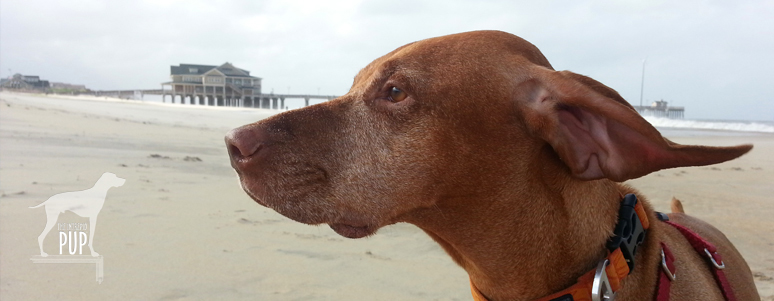
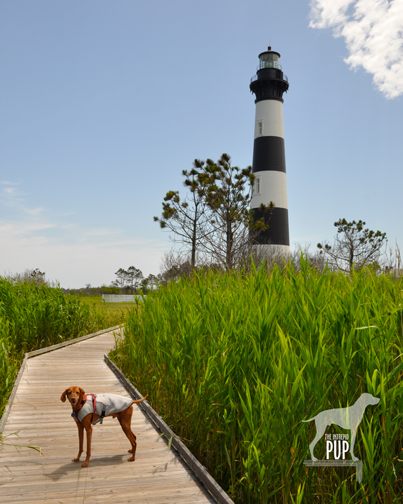
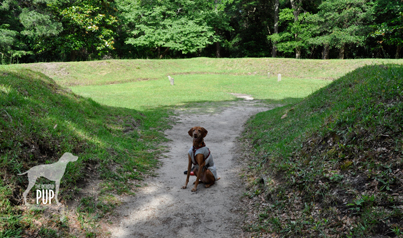
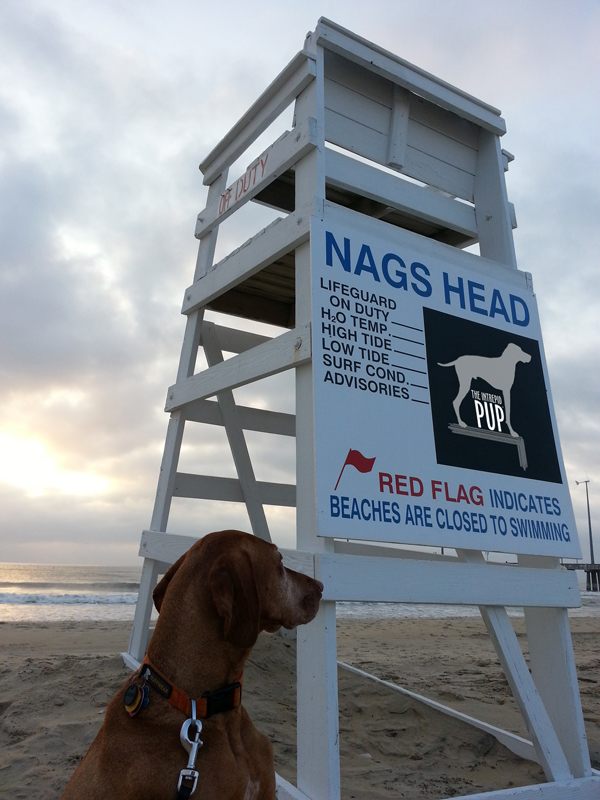
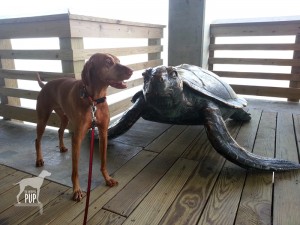
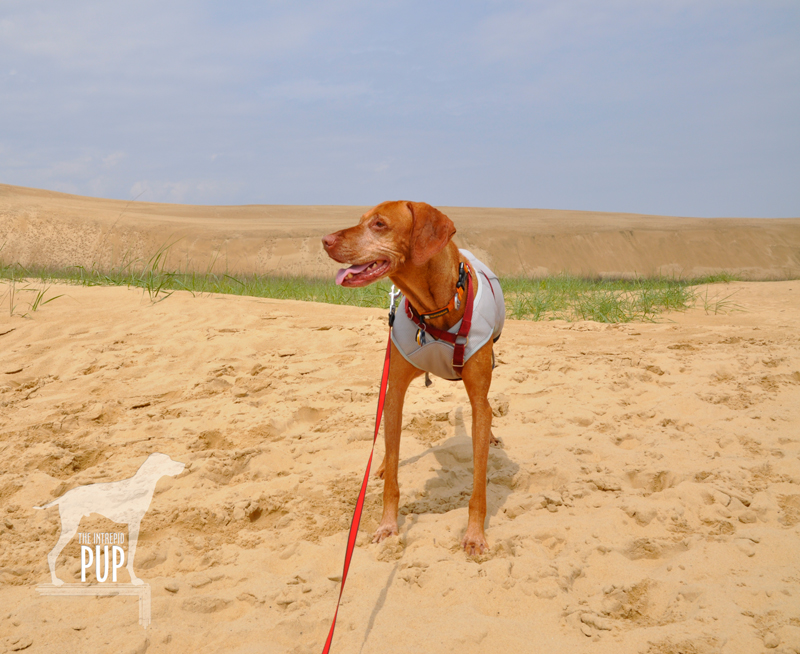
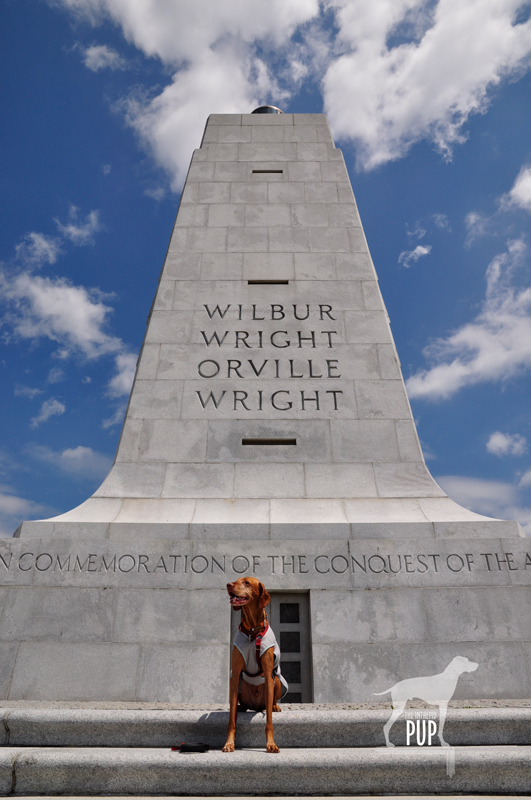
 You see a lot of dogs on the Outer Banks enjoying outdoor activities a-plenty. So at first we were puzzled by the fact that dog-friendly lodging and dining weren’t as abundant. It turns out that many dog-owning OBX vacationers rent beach houses by the week (Sunday to Saturday) so they’re not needing as many hotels and always have the option of cooking in. That being said, there are approximately a dozen pet-friendly overnight accommodations. We stayed at the
You see a lot of dogs on the Outer Banks enjoying outdoor activities a-plenty. So at first we were puzzled by the fact that dog-friendly lodging and dining weren’t as abundant. It turns out that many dog-owning OBX vacationers rent beach houses by the week (Sunday to Saturday) so they’re not needing as many hotels and always have the option of cooking in. That being said, there are approximately a dozen pet-friendly overnight accommodations. We stayed at the 
